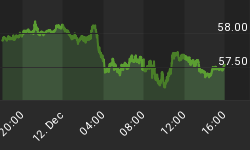Regardless of what happens in the short-term (i.e. interim market correction of routine or severe degree upon completion of this sentiment-induced broad market rally), the analysis being brought forward in NFTRH over the last few weeks is painting a picture of a 2012 that could by year end, feature heightened inflation concerns as opposed to the deflationary ones that so predictably came about after the spring of 2011.
The 'continuum' (AKA the monthly view of the TYX or 30 year Treasury yield) predicted last spring that Bill Gross of PIMCO stood to be very wrong in his highly publicized Treasury bond short play. Another way to put it is that PIMCO was heavily 'long' rising interest rates at a technical point that had limited every rise in long-term rates over a span of decades. Was he going to suddenly make THE call and be right on this? Unlikely.
Enter one US congressional debt debate and one European sovereign debt meltdown and the US Treasury market was suddenly all the rage, as long-term interest rates plummeted. Enter the 'deflationists' that always come center stage at such times.
Whereas Mr. Gross was taking a big risk in being short the bond (long rising rates) near the 100 month exponential moving average (solid red line), the people buying the deflation story hook line and sinker, clinging to the US government's most long-term debt paper for safety, are now sitting squarely in the line of fire with respect to upside inflation risks as the TYX decides whether it is going to insert another green arrow at current levels.
Here is a closer look at the TYX in the form of a weekly view.
Let's just say that this looks like a bottom in the making for 30 year yields. Dialing in closer, the daily view below shows a move above resistance. While it is too soon to confirm this as a breakout, we can certainly see some risks to the 'declining interest rates' and deflation scenarios going forward.
Now, it is not as easy as just watching nominal interest rates and calling 'inflation' or 'deflation'. There are other indicators to use to look at this from as many angles as possible, including the various yield curves between long and short term Treasury rates. NFTRH171 took a look at the most extreme curve, the TYX-IRX (30 year yield to T bill 'yield'), for example. Its message was one of deflationary wrangling amid upward and downward spikes and massive volatility in 2011, while remaining in an upward trend over the long term.
This is a picture of accommodative policy making, the likes of which tends to bring on obvious inflation problems in the form of rising asset prices later on.
Then of course there is the hugely bullish sentiment toward the currency that denominates US Treasury bonds. Here is the latest view of the Rydex Strengthening Dollar Assets (compliments of sentimentrader.com), which is of course, bearish on a contrarian basis. 2011's refugees, many of whom were likely too long the 'inflation trade' last spring as inflationary fears maxed out are sitting comfortably in US dollars, convinced of coming declines in asset markets.
We have been fed so steadily a diet of the European debt crisis, the MF Global margin meltdown and unhealthy systems coming apart at the seams left and right. I do not want to minimize these threats, but if things go the way they have gone all along the 'continuum' at points when the majority were convinced of certain outcomes and eventualities, a set up is in place for something very different.
That would be the "Inflationary 2012" theme NFTRH is working on week by week. Risk has been managed rigidly throughout a challenging 2011 to the present time, and this year we look forward to the possibility of something very different, judging by this view of the US Treasury market, US currency and several indicators that are generally updated in NFTRH on an ongoing basis.




















